By: Nia S. Amira
Nia S. Amira is an Indonesian author, journalist and linguist. She writes on culture, international affairs, multiculturalism and religious studies. Her articles have appeared in over thirty newspapers that are published in Europe, Asia, and United States.
There are a lot of beautiful places that God created for human being, sometimes people do not realize or even deny this fact and destroy the nature, even the beings.
Azerbaijan, a souveriegn country in the Transcaucasian region, situated at the crossroads of Southwest Asia and Southeastern Europe. It is bounded by the Caspian Sea to the east, Russia to the north, Georgia to the northwest, Armenia to the west and Iran to the south. The exclave of Nakhchivan is bounded by Armenia to the north and east, Iran to the south and west, while having a short border with Turkey in the northwest.
Also Read: Egypt, Qatar Deliver Trump’s Gaza Ceasefire Proposal to Hamas
Azerbaijan known as the land of fire and it has quite a lot of oil resources for the welfare of its people. Azerbaijanis are known as a friendly people and always welcome their guests who come to visit with open heart, including those from neighboring countries. The Azerbaijanis have a distinctive character, bringing eastern hospitality and the modern western mind, and this character shows to other nations that the Azerbaijani people always want to move forward with other nations by holding hands together.
The Azerbaijan Democratic Republic proclaimed its independence in 1918 and became the first Muslim-majority democratic and secular republic. Before the country was incorporated into the Soviet Union in the 1920 as the Azerbaijan Soviet Socialist Republic, a nightmare came to the innocent people when the bloody massacres committed against Azerbaijanis on March 31, 1918. Flash back to the rapid development of petroleum industry in Baku in the late 19th and early 20th centuries, attracted a wave of migration of Armenians to the city. As one of the main industrial centers of the Russian empire, Baku regarded the emergence of the industrial proletariat and revolutionary spirit. The Armenian workers increased rapidly at the beginning of the 20th century, and were active in Baku’s revolutionary and socialist movements.
Athe first Russian Revolution (1905-1907), the Armenian Dashnaksutyun party began to spread nationalist ideas among Armenian workers in Baku. By using revolutionary ideas to promote their own ideas on the nationalistic agenda and was inspired by the ideas of creating “Greater Armenia,” a series of bloody massacres of Azerbaijanis was carried out in the period of the first two years of the Russian revolution. Without any conscience, a hundred of Azerbaijani settlements were destroyed, flat on the ground, and thousands of civilians were killed. Neighbor was no longer with smiles like before, even wanted to take everything, including your life.
In 1918 a massacre was a more skilled action and was cruelly implemented than the attacks in 1905-1907. The victory of the Bolsheviks during the 1917 Russian revolution and collaboration with the Bolsheviks gave way to the Dashnaksutyun Party to realize its nationalistic goals easily. Taking advantage of the situation that followed the October 1917 Revolution in Russia, Armenian nationalists began to pursue the implementation of their plans under the banner of Bolshevism. In 1918, Russian Bolshevik leader Vladimir Lenin appointed Stephan Shaumyan of ethnic Armenian as an Extraordinary Commissioner of the Caucasian Region. At that time, the Bolsheviks seized power in Baku and viewed the Armenian Party Dashnaktsutyun as a source of support to eliminate the influence of the Azerbaijan National Musavat Party in Baku and also in the regions. In this case, the interests of the Bolsheviks and Dashnaks in March 1918 coincided.
Also Read: Israeli Airstrikes Kill 54 Palestinians Across Gaza
On March 2, 1918, while speaking at a meeting of the Baku Soviet, Shaumyan vehemently criticized the Musavat Party, which wanted to separate Azerbaijan from the Soviet Union. Armenian Party Dashnaktsutyun was under the pretext of fighting counter revolutionary elements, regulated the plan to dissolve Azerbaijani citizens throughout Baku province.
It was by the acknowledgement of Stephan Shaumyan, that 6000 Baku Soviet armed soldiers and 4000 armed men from the Dashnaksutyun Party participated in the massacre of Azerbaijani civilians. A real drama of life even started on March 30, when the Armenian-Bolshevik unit targeted Baku with long-range fire from the ship. Later, armed members of the Dashnaks attacked the houses of Azerbaijanis and carried out merciless massacres. On March 31 and in the first days of April, the massacre became increasingly violent. Thousands of Azerbaijani civilians were killed simply because they were ethnic Azerbaijani. During this period, the Armenian-Bolshevik unit destroyed more than 20,000 Azerbaijani civilians in Baku: people were burned in their homes, killed and tortured with inhuman cruelty. As a result, more than 16,000 people were killed very savage in Guba province in the first five months of 1918; so that a total of 167 villages were destroyed, 35 of them are no longer exist today.
Armenians had installed machine guns in various places in the city to shoot those who tried to escape. Avanes Apresyan, an Armenian officer, one of the active participants in the massacre of Azerbaijanis, wrote in his memoir “Men were like this,” that in Baku they killed 25,000 Azerbaijanis in the March massacre. However, the genocide of Azerbaijanis by Dashnaks was not limited to Baku. Within a short period, Armenians committed massacres in Shamakhi, Guba, Irevan, Zengezur, Karabakh, Nakhchivan, and Kars. The discovery of mass graves in Guba province, Azerbaijan in 2007 confirmed the inhumanity of Armenian. Research on the burial site revealed that during the Armenian armed attack on Guba in 1918, people were subjected to violence that was unprecedented and severely murdered. The tomb contains remnants of the mass burial of local residents. Along with the Turkish Muslim population, Armenian forces also massacred Jews and Lezgins. Even those who demanded an end to the massacre, including Russians or Georgians, were brutally victimized.
Shaumyan bragged about Armenian brutality against Azerbaijanis: “We have obtained brilliant results in the battle with Azerbaijan. The enemy has been completely annihilated. We imposed conditions on them and they signed them.” Shaumyan unashamedly confirmed the involvement of the armed forces of the Dashnaksutyun Party in the massacre of Azerbaijanis in Baku. In a letter dated April 13, 1918, addressed to the Board of Commissioners of the People’s Soviet Russian Federation Socialist Republic, Shaumyan justified the heinous crime by saying, “The presence of the national division has partly marked the civil war as a national massacre, but it is impossible to do the opposite intentionally. Poor Muslims who have suffered in a great deal, but now have come together with Bolsheviks and Soviets … oil is ready at our disposal. “German researcher Erikh Figle in his research “Truth terror. Armenian terrorism – roots and reasons” speaking about Shaumyan’s activities in 1918 emphasized that the aim was to armenianize Baku “in any way”.
Also Read: School Bus Explosion in Pakistan Kills Five, Military Accuses India
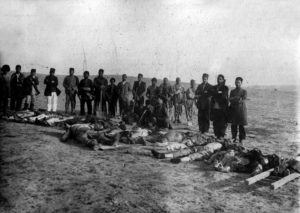
According to various estimates, 12,000 to 30,000 people died in Baku in just three days. However, Shaumyan, Chairman of Soviet Baku, did not hide his satisfaction: “We are afraid of the national structure of our city. We are afraid that the fight might produce unwanted colors. We even have to use the Armenian Dashnak Regiment. We cannot even allow ourselves to refuse their service, the Armenian National Council made arrests, searches, requests, etc. by themselves. The victory was so great that it did not overshadow the reality”. Soviet Baku dependency on Dashnak forces caused outrage among Bolsheviks from other countries. One witness to the Azerbaijani genocide, Bolshevik Blyumin, was later recorded in his memoir, “With the event of 1918, we used Dashnak forces, because we did not have our own armed forces. However, Dashnak forces did their dirty work. They turned civil war into a national cleansing, after massacring up to 20,000 Azerbaijani poor people”.
The March 1918 event became the focus of attention after the proclamation of the Azerbaijan Democratic Republic (ADR). The Extraordinary Investigation Commission (EIC) was established by the ADR on July 15, 1918 to support resistance to the Azerbaijani population. An important feature of this commission consists of the best representatives at this time representing various countries – Russia, Jews, Poland, Georgia and even Armenia. These factors prove EIC’s competence and impartiality. Materials collected by EIC in August 1919 were sent in 36 volumes and 3,500 pages. Based on this evidence, EIC submitted 128 reports and designs to file lawsuits against 194 people accused of various crimes against peaceful participation. So, in mid-August, 24 people in Baku and around 100 people in Shamakhi were arrested. This is the first attempt made on political and legal policies against the policy of genocide committed against Azerbaijanis. However, the collapse of the Azerbaijan Democratic Republic made it impossible to complete this work.
After restoring independence in 1991, the Republic of Azerbaijan continued its assessment of the political genocide in March 1918 and committed to resolving the unfinished ADR efforts to bring about justice. Ahead of the 80th anniversary of the tragedy, President Heydar Aliyev issued a Decree to announce March 31 as a national day of mourning. The decree has become a key document for carrying out political and legal assessments of acts of genocide committed against Azerbaijanis in the early twentieth century. This decree also signifies the dedication of the Azerbaijan people to their national values, historical roots and homeland. At the same time, the commemoration of the Azerbaijani Genocide Day aroused awareness of the world community on the facts of the massacres and ethnic cleansing of Azerbaijanis in the past and present.
Also Read: Half a Million People in Gaza on the Risk of Starvation: IPC
A Turkish big media owner from Antalya, Melyüt Yeni, Vice President of Turkish Confederation, sent his message through instant message that he has close feeling with the people of Azerbaijan and for what had happened on 31 March. He said it is referred to as Azerbaijanis Day in the Republic of Azerbaijan, and reflected the memory of the bloody genocide against the Azerbaijanis by the Armenian gangsters in Baku, Shamahi, Guba, Mughan and Lankaran in 1918. Yeni added that he remembers by all the information he had that it was to all the martyrs who lost their lives during this events.
A 36 year old Seymur Mamadov through long distance call says “This terrible tragedy. We always remember it, not only our elders, but also to the younger generation. This is our history.” Mamadov is a Director of the International Expert Club “EurAsiaAz” and editor-in-chief of the Azerbaijani News Agency Vzglyad.az added that his close friends who live in Guba told him how their relatives were killed by the Armenian gangsters in that year 1918. People cannot visit the graves of their beloved as they are no graves. Mamadov hopes justice will come one day as a triumph.
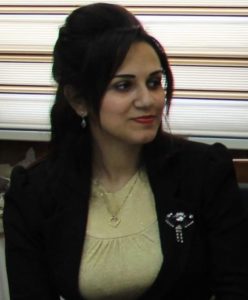
Ms. Turkan Qasimova (28).(Photo: Exclusive)
Turkan Ilqar Qasımova, a candidate for the history degree of Doctor of Philosophy of Baku State University and the winner of the “50 + 50” grant program at the University says, “I think the one of the most depressing portion of the history of Azerbaijan is the March genocide, which has occured in 1918. The tragedy has led to thousands of death and devastated historical buildings including mosques and other main facilities for the people, it was really an unprecedented tragedy. A 28 years old Turkan pointed that the coverage of this bloody history was broadened after the establishment of the independence of the Republic of Azerbaijan. The President of the Republic of Azerbaijan, Ilham Aliyev, duly continues our National leader Heydar Aliyev and his political course of inheritance in the coverage of this issue that has indisputable roles.
While Ilqar Qasimov (57) a village representative from Tartar region in Nagorno-Karabakh said with his low voice by a long distance call that the March genocide is a black memory of Azerbaijanis. Black history. He hopes no one forgets this black day for Azerbaijanis. The Armenian wanted to shoot Azerbaijanis from the heart, which is Baku. But the Turkish-Azerbaijani friendship has turned this plan upside down. The bright future of Azerbaijan is very close. He says, “I believe in Allah as much as I have!”
Also Read: Israeli Captive Says “Only a Deal Will Bring Us Home”
Azerbaijan’s national leader Heydar Aliyev signed a decree in March 1998 in order to draw the attention of the international public to the event, which has unfortunately taken its place as the largest mass genocide in the history of Azerbaijan, and to symbolize all the massacres against the Azerbaijanis in a single day by the Armenian extremists. With this decree, 31 March was declared as the genocide day of the Azerbaijanis, and the memory of the victims of the genocide was always preserved in the memory of Azerbaijani society. The decree also refers to the loyalty of the Azerbaijani people to their national values, their historical roots and their homeland, even since 101 years ago.
I hear the voice of Nizami Ganjavi reciting his sorrow feeling through the beautiful poetry of eternal love to Layla-Maznun. Everyone has love not only for someone but for everyone and to deliver the sympathy.
I just got up from my seat when I realized my eyes were wet by tears as a little seepage.(AK/R01/P2)
Mi’raj News Agency (MINA)
Also Read: Al-Quds Brigades Seize Israeli Surveillance Drone Over Khan Younis





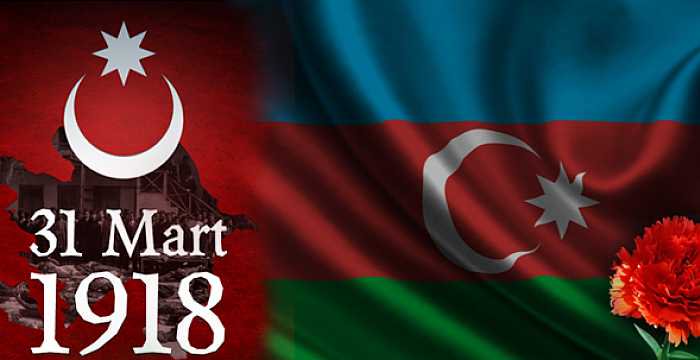


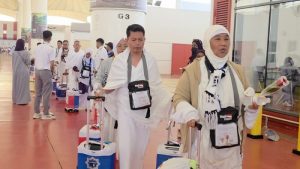
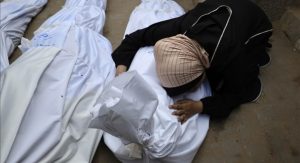
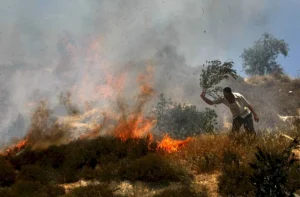
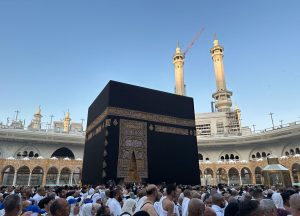
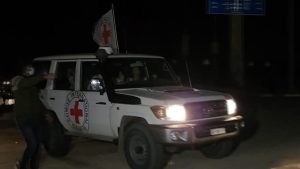
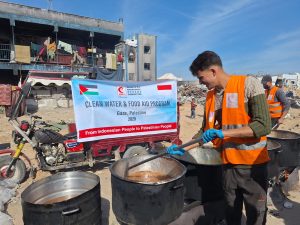

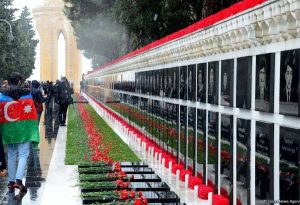
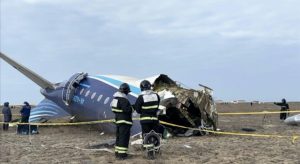


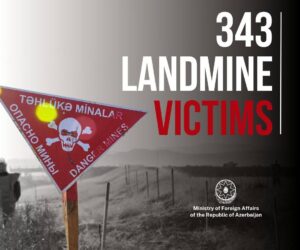
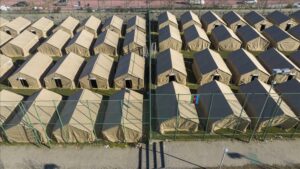



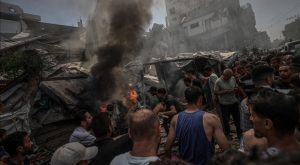
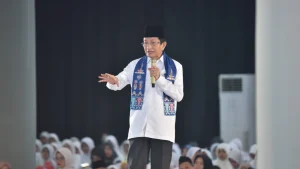

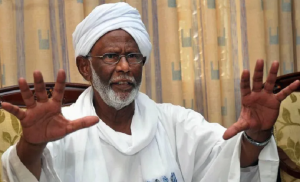

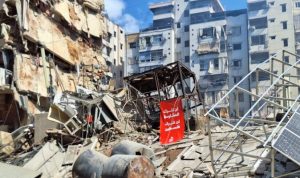

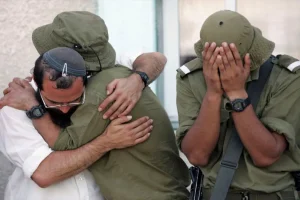



 Mina Indonesia
Mina Indonesia Mina Arabic
Mina Arabic